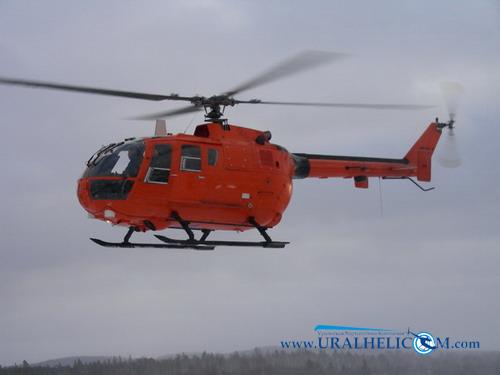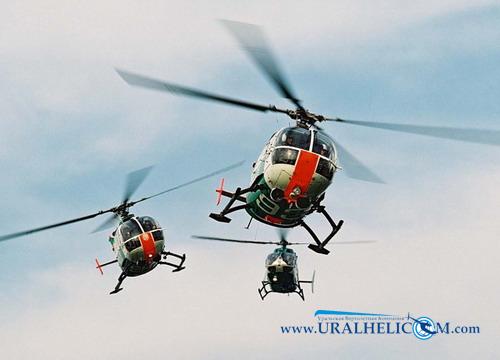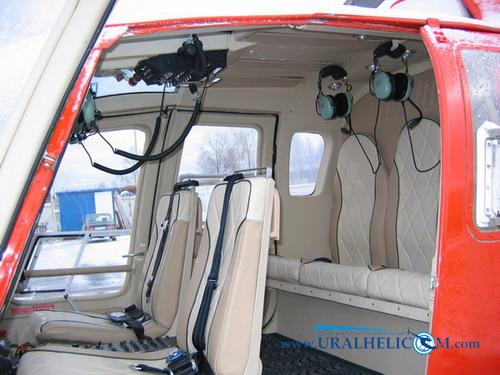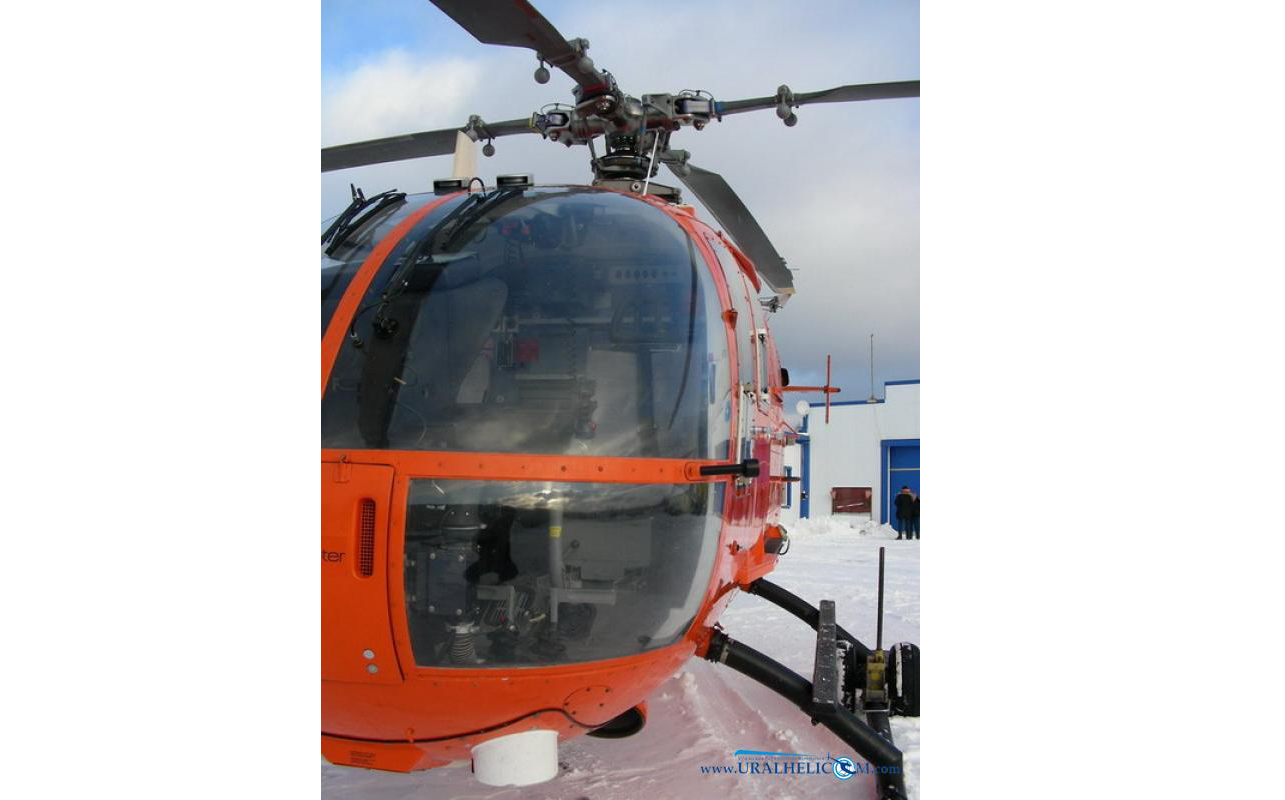The BO-105 multipurpose helicopters have proven themselves to be reliable and unpretentious aircraft, successfully operated both in the north and in the south. BO-105 helicopters are certified in most countries of the world and Russia. 5 helicopters of this brand were delivered to the Ministry of Emergency Situations of Russia and have been successfully operated for more than ten years.
The VO-105 light helicopters, thanks to the use of a rigid main rotor, are highly maneuverable, they perform aerobatics, including the "Nesterov loop", and a number of world speed and range records were set (1,714 km in 1974).
Design: the helicopter is made according to a single-rotor scheme with a tail rotor, two gas turbine engines and a skid landing gear. The fuselage is all-metal of the semi-monocoque type made of aluminum alloys. Engine fairings and other non-power elements are made of fiberglass. In the bow there is a cabin with two seats for pilots and three seats for passengers. At the back of the cabin there is a luggage compartment and a cargo hatch with flaps opening to the sides. With the rear seats removed, two stretchers can be installed in the cabin and luggage compartment.
The chassis is a non-retractable skid. Depreciation is carried out due to elastic deformation of the transverse struts, removable wheels or four inflatable ballonets can be installed.
The main rotor is four-bladed with rigid attachment of the blades. The blades are rectangular in plan, folding, made of reinforced fiberglass with an anti-erosion titanium alloy lining along the toe, in the butt part they are equipped with pendulum vibration dampers. Blade profile modified NACA 23012 with increased toe curvature, blade chord 0.27 m. The titanium alloy bushing has only axial hinges with roller bearings and torsion bars made of steel bands.
The steering screw is two-bladed with a diameter of 1.9 m with semi-rigid attachment of the blades. The rectangular blades are made of fiberglass in plan. NACA 0012 profile, blade chord 0.12m.
The power plant consists of two Allison (Rolls-Royce) 250-C20 B or C28C turboprop gas turbine engines installed in the upper part of the fuselage. The exhaust pipes are bent upwards at an angle of 45 degrees. The dry weight of the engine is 71.5 kgf. The transmission consists of a three-stage main, intermediate and tail gearboxes, designed to transmit power of 2 * 257 kW / 2 * 345 hp when running two engines and 238 kW / 420 hp when running one engine.
The fuel system consists of the main and consumable soft fuel tanks with a total capacity of 580 liters. It is possible to install additional tanks. The main rotor control system is modular, redundant, booster with a pressure of 105 kg/cm2.
The electrical equipment includes two starter generators with a DC voltage of 24 kW and a capacity of 22A-h and a ground power outlet. Standard equipment includes HF and VHF radio stations, instruments for piloting and monitoring engine operation, navigation using Doppler radar, stability enhancement system, landing headlight, etc.


 Вертолет Airbus Helicopters BO-105 CBS4/5
Вертолет Airbus Helicopters BO-105 CBS4/5 






